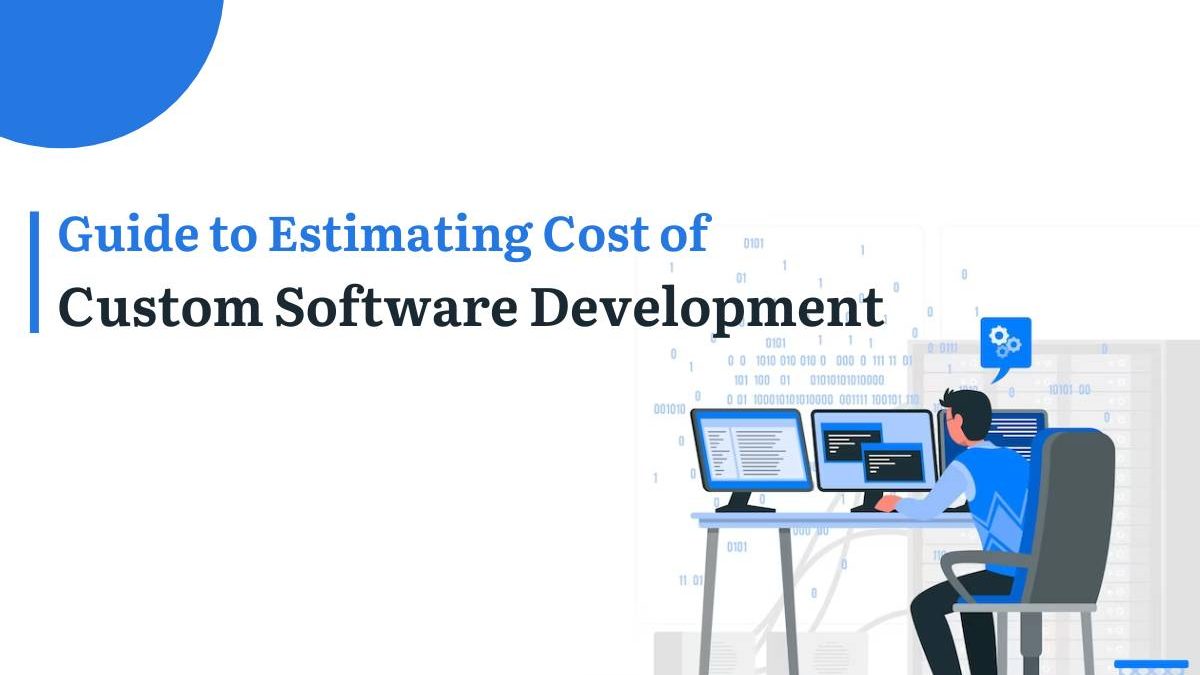Customization and personalization are the need of the hour in every business industry, as modern customers prefer personalized services. Hence, every business focuses on building customized software and rendering personalized solutions. According to Grand View Research, the custom software development market size, valued at USD 24.46 billion in 2021, is expected to expand at a compound annual growth rate (CAGR) of 22.3% from 2022 to 2030. With every brand marching towards custom software development, you may also want it for your business. But, you might be wondering about the approximate cost of custom software development, which is quite understandable. This blog will unwind and break it down for you.
Table of Contents
Custom software development explained
Custom software product development refers to designing, developing, and deploying tailored software applications to meet the specific needs of businesses or users. Unlike off-the-shelf software that provides generalized solutions, custom software meets the company’s unique needs, resulting in increased productivity, improved efficiency, effective scalability, seamless integration with internal systems, and an edge over the competition.
Factors affecting custom software development cost
1. Software size
The first and foremost thing is software size. The larger the project, the more money you have to invest. Hence, the software size significantly contributes to the price of custom software development. Plus, the price depends on the targeted user base. In general, the size of the software is nothing but the number of screens or pages in the software application, and the user base equals the number of expected potential users.
For instance, a startup’s website is a small project with very few pages and simple functionalities operated by limited users. In contrast, an online marketplace and educational institutions will have large applications with more users accessing them simultaneously. Building a larger application for more users will obviously cost more than building smaller applications.
2. Type of platform
The next significant deciding factor would be the development environment. For example, Android, iOS, and Windows are the most preferred platforms for software applications as users run the application on mobiles, laptops, and other electronic devices today. So, the application needs to support all the preferred platforms. Developers often use cross-platform development methods to create software applications that run on multiple platforms. That, in turn, demands technical expertise, technologies, and other infrastructure, which varies depending on the application functionalities.
3. Software complexity
The next thing on the list is the complexity of the software. The complex features demand complex coding, computing, and processing power. That requires a robust backend that, in turn, increases the software development costs. Plus, the more users use, the software complexity further increases. Hence, keeping the functionality straightforward and having defined features will reduce the complexity and costs.
4. Design requirements
Design is the first thing the users notice when they use the application. Businesses tend to keep it attractive and interactive by using various color palettes, images, fonts, and other innovative design elements. Though visually appealing sites are impressive, simplicity and user-friendliness are more important. Hence, a minimalist design with easy-to-navigate pages will do the job rather than investing in creative and innovative design elements.
5. Integration with other systems
Another impactful factor is your custom software’s need to integrate with other systems. Stand-alone software solutions won’t work anymore. All software applications must integrate with other systems like a well-known third-party service app or widely used APIs. Integrating your custom software with unique systems specific to your niche might sometimes demand developing new Application Programming Interfaces (APIs). That will add up to the cost for sure.
Estimate the Custom Software Development Cost with the following steps
1. Choose the right type of software
Often, the software caters to small-scale, mid-level, or enterprise-level businesses. Thus the custom software development costs drastically vary depending on the business type, i.e., software type. Though there is no one fixed rate for developing custom software as it largely depends on the scope of work, let’s see a rough estimate. For instance, small-level custom software development costs around $50,000, mid-level custom software costs around $150,000, whereas enterprise-level custom software costs over $300,000.
2. Working hours matters
Generally, the third-party technology partner will charge per hour for custom software development. However, the per-hour rate will vary depending on the location of your technology partner. For instance, the custom software development costs in Western countries like the United States or Europe will typically be more than the Asian countries like India. Partnering with Asian countries will help you keep your development costs down.
3. Keep an eye on the product’s features
The cost is directly proportional to the features you want to have in your custom software. Hence, companies should go for Minimum Viable Product (MVP) with all the crucial elements and functionalities to better understand the costs and release the product sooner in the market. Moreover, once you release the MVP, you can gather feedback and improvise the features accordingly. That, in turn, will help you build a quality product with the best features that benefit the end users while cutting unwanted costs.
4.The scope of scalability of the product
Though it’s better to build an MVP with essential features, you should weigh the odds of the scalability of your project. For instance, if your business expands and more people tend to use your software application, how will its performance be? The application should be scalable even if your business grows with a larger user base. Considering all these factors while developing custom software will avoid potential challenges when your business picks up, and you want to add features and functionalities later.
Conclusion
This blog would have given you a rough estimate of the custom software development costs. However, you can always ask for past projects and their costs for samples before signing a contract with a custom software development company. Thus, you can better estimate the costs and plan your time and money accordingly.

